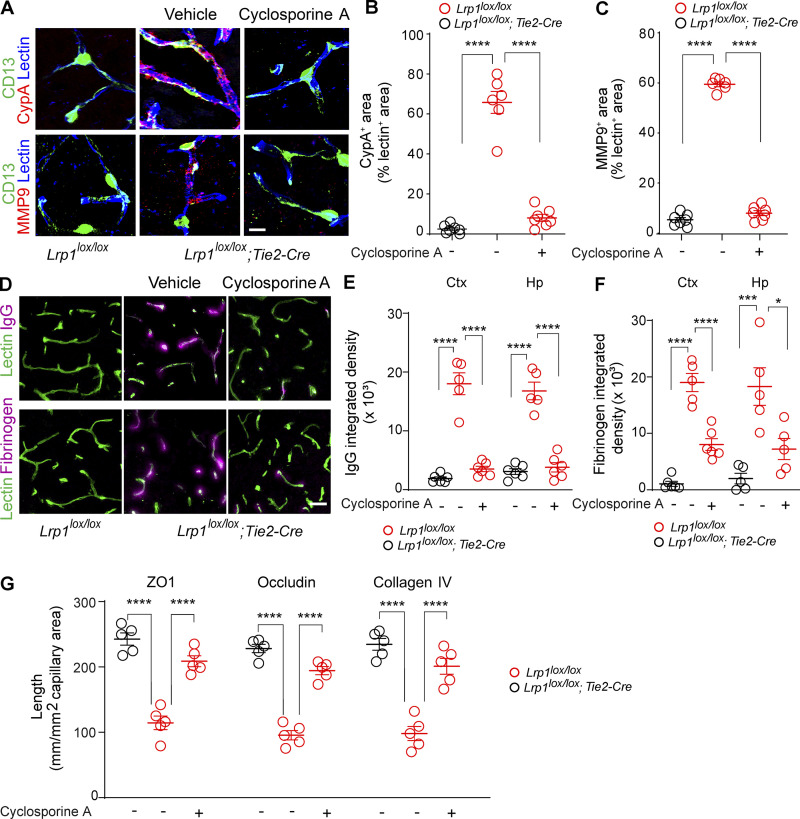Figure S5.
Short-term treatment with CypA inhibitor cyclosporine A reverses BBB breakdown in Lrp1lox/lox;Tie2-Cre mice. (A–C) CypA (top, red) and MMP9 (bottom, red) immunostaining in brain capillary (<6 µm in diameter) lectin+ endothelium (blue) in the cortex of 2-mo-old Lrp1lox/lox control and Lrp1lox/lox;Tie2-Cre mice treated for 7 d with cyclosporine A (see Materials and methods) or vehicle (A), and quantification of CypA (B) and MMP9 (C) fluorescent intensity in brain capillary lectin+ endothelium in these mice. Scale bar = 10 µm. Mean ± SEM, n = 6–7 mice/group. (D–F) IgG (top, purple) and fibrinogen (bottom, purple) immunostaining and lectin+ endothelial brain capillary (<6 µm in diameter) profiles (green) in the cortex of 2-mo-old Lrp1lox/lox control and Lrp1lox/lox;Tie2-Cre mice treated with cyclosporine A or vehicle (D), and quantification of IgG (E) and fibrinogen (F) perivascular capillary deposits in the cortex (Ctx) and hippocampus (Hp) of these mice. Scale bar = 20 µm. Mean ± SEM, n = 5–6 mice/group. (G) Quantification of ZO-1, occludin, and collagen IV length on lectin+ endothelial capillary profiles in the cortex of 2-mo-old Lrp1lox/lox;Tie2-Cre mice treated with cyclosporine A or vehicle compared with Lrp1lox/lox. Mean ± SEM, n = 5 mice/group. In B, C, and E–G, significance was determined by one-way ANOVA followed by Bonferroni post hoc test, *, P < 0.05; ***, P < 0.001; ****, P < 0.0001.

